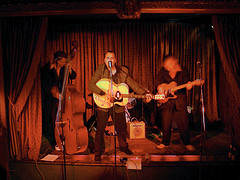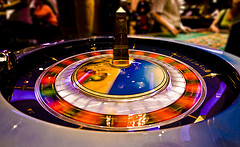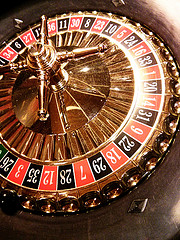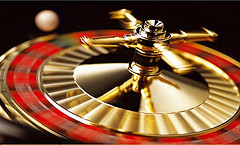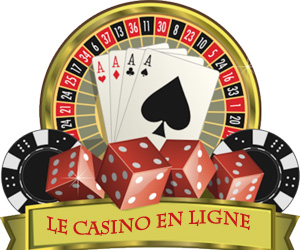Roulette is a popular casino game. It is sometimes called as ‘rulet’. Roulette and casino for a long time have been playing quite an influential role in movies on both sides of the Atlantic. Though there are some differences in the American and European roulette system, they are equally celebrated in both these continents. The history of roulette is fascinating with its giddy mix of mathematical genius and thrills of gambling. Roulette was christened after the French diminutive used for the « little wheel ». There are diverse kinds available in roulette. There are the European roulette, American roulette, and French roulette. The French roulette is the ancestor of the European version having the identical wheel with a different playing field. You can also play online roulette games.
In this game a player can opt for placing a bet either on a particular number or on a series of numbers. It can be decided by the two colors black and red, or if that number is even or odd. To determine that winning color or number, a croupier will spin the wheel to one direction and subsequently spin the ball in an opposite direction. The ball spins around the slanted circular track that runs around the wheel’s circumference. Eventually the ball loses its momentum and descends on the wheel directly in one of the numbered and colored pockets of the wheel. The European or the French roulette has 37 pockets unlike its American counterpart having 38 pockets.
The earliest format of roulette had been invented during 18th century France. Renowned mathematician Blaise Pascal was responsible for creating the roulette wheel. He stumbled upon the primitive format of roulette during 17th century while he was searching for the « perpetual motion machine ». It is believed that the famous roulette is an inventive fusion of various English wheel sports such as Reiner, Roly-Poly, E.O. and Ace of Hearts. There is another group who believe that it originated from a number of Italian board-games namely Biribi and Hoca. The modern roulette is the revised form of the previously existing French board-game of the same name.
The gambling potential of roulette was identified pretty early. In the French heartland of Paris, roulette has been practiced in its current form. An early depiction of the present form of roulette can be found in one of the French novels by Jaques Lablee. An earlier reference is available in the regulations for Quebec where gaming of hoca, faro, dice and roulette were banned. The risk-taking gambling aspect of roulette was behind its frequent banning. This style invented by Pascal remained intact until 1843. Two Frenchmen Louis and Francois Blanc, in Homburg, the German casino town introduced their adaptation of roulette that followed the single « 0 » method in roulette wheel. This addition of 0 will increase these house odds for winning. They tried to create a new style with the intention of competing against the other casinos that offered the conventional wheel with double and single zero pockets.
In some of the primitive American roulette wheels there were the numbers from 1 to 28, along with the single zero, the double zero as well as the American eagle. This can be found in the Hoyle gambling book in the 1886. In accordance with Hoyle, the single zero and the double zero together with the eagle are never the bars. But if the ball drops into any of them, the player can sweep everything upon that table.
During the 1800s, all over the Europe and United States of America, the game roulette started to spread. It rose to popularity and became one of the most renowned casino games ever. After the German rule put an end to gambling during the 1860s, the Blanc family decided to move to the last remaining legal casino operation of Europe in Monte Carlo. With them Monte Carlo became the new gambling Mecca for those elite Europeans. It is in this place that this single zero roulette gained mass favor and became a premier casino game. Over a few years this roulette was exported all around the globe. But the double zero roulette remained dominant in the United States. Roulette is known as the « King of Casino Games ». It earned its name probably because of its association with the splendor of those casinos of Monte Carlo.
Legend has it that Francois Blanc allegedly negotiated with the Devil so as to access the secrets of the game of roulette. This legend partly derived depending on the detail that the total of the numbers, from 0 to 36, on the roulette wheel comes to 666. This is believed to be the « Number of the beast ».
In United States, the famous double-zero French roulette wheel prepared its way from New Orleans to Mississippi and then sailed westward. During this journey in States, the wheel was eventually positioned on top of a table. It was done due to rampant cheating both by the gamblers as well as the operators and to stop people from hiding the devices on the wheel or the table. The betting plan was also simplified. This in due course evolved into an American technique roulette game, quite different from that of the established French method.
The American roulette developed and grew in all the gambling dens in the new regions where provisional games were established. On the other hand the classic French roulette progressed with its style and elegance in the casinos of Monte Carlo. However, the American style roulette layout with the fast cash actions and simplified betting that uses either a double or single zero wheels dominates most of the casinos in every corner of the world.
During the earlier parts of the twentieth century Mont Carlo and Las Vegas were the lone casino cities of note that dealt with the long-established single zero French method and the double zero American wheel. During the 1970s, the casinos started to thrive around the globe. By the end of 2008, there existed as far as hundreds of casinos worldwide that offer the exciting game of roulette. The double zero roulette wheel variety is predominant in the South America, U.S.A., the Caribbean and elsewhere the single zero gaming approach is more favored.
Roulette players can opt for an array of betting alternatives. Placing an ‘inside’ bet means either choosing an accurate number of the pocket where the ball will fall or a little range of the pockets depending on their propinquity on the gaming layout. Players who are interested to place ‘outside’ bets have to pick bets on the larger positional grouping of pockets, if the winning digit is even or odd and the color of the pocket. For every kinds of bet the payout odd is based upon its probability.
The roulette table generally enforces maximum and minimum bets. All these rules normally pertain separately to all the ‘outside’ and ‘inside’ bets for every spin of the player. For such ‘inside’ bets at the roulette tables, several casinos may employ different chips of diverse colors at the roulette table to distinguish the players. Players can carry on their betting as long as the ball keeps on spinning around the roulette wheel until the croupier announces that no more bet can be placed.
When the winning color and number is decided by the wheel, the croupier places the marker known as the dolly on the winning number on that roulette game layout. Whilst the dolly is placed on the table no players can place bets, remove any bet, or collect bets from the roulette table. The dealer or the croupier then sweeps away all the other losing stakes either by rake or hand. He determines all the payouts of the remaining outside and inside winning bets. Once the croupier is done with making the payouts, after that the dolly is taken away from the roulette board. The players then collect the winnings and start to place new bets. Those winning chips will stay on the gaming board.
There is the « Call Bets » that are referred as the « Announced Bets ». There is a legal distinction between these seemingly identical bets. A player can place a « Call Bet » without placing money on the roulette table that covers the cost of that bet. In several jurisdictions such as Nevada, USA and United Kingdom this is regarded as a form of gamble on credit and therefore is illegal. In case of the « Announced Bet » the player immediately places adequate money that covers the sum of the bet on the roulette table, even before he knows the result of that spin in progress.
In roulette there are diverse number series having special names. Frequently these bets are called as « the French bets ». Each part covers a segment of this wheel. The series depend on the proximity of a group of numbers on a roulette wheel. Not all the casinos may offer the same bets and some may provide additional bets and the variations of others.
The history of roulette is mind-boggling. Einstein once famously exclaimed that unless one steals money from the roulette table it is impossible to beat it. For centuries, with the evolution of roulette there were people who tried to do just that – identify the secret code so as to turn the tables of roulette and the player wins. A few succeeded but most couldn’t.
For more information about roulette or roulette strategy, please click Roulette Strategy [http://www.roulettestrategy1.net/] for more information.
Article Source:
http://EzineArticles.com/?expert=Rob_S_Evans
Trouvez Plus Roulette Articles

